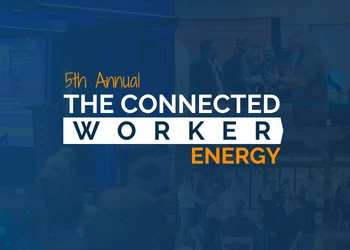Three technological advances to take your projects to the next level
Add bookmarkIn the final part of his analysis into the best ways to manage an offshore development, Leandro Basilio concludes with his breakdown of core areas for novel technology employment and ultimate recommendations for all project owners.
Despite all aspects previously discussed, each company develops its own culture and practices applied to the development of offshore production systems.
There is often a strong tendency towards repetition of methods and processes as the use of equipment and systems that are already tried-and-tested hat brings comfort to all involved. However, in more challenging times, such as the current oil environment, companies can be induced into test new methods and processes.
The development of new technologies, methods and processes has been led by the major operator and service provider companies in the industry. Plainly put, these are the companies that can afford to be innovative as they have the bottom line to be able to take risks.
That said, the structural changes necessary to allow new techniques to succeed often need to happen through cultural changes that permeate an entire organisation.
We can see several developments that are gaining prevalence in the sector. Below I have highlighted three.
Subsea processing systems
Subsea processing is a solution increasingly adopted by oil companies to access reserves located in remote areas or where the environmental conditions are severe, such as the North Sea, the Arctic and Alaska, and also in the deep waters off Brazil and the Gulf of Mexico.
The advantages of sending processing equipment to the seabed, are the maximisation and acceleration of the recovery factor of oil and extending the life of the field itself. This reduces the number of floating production units and surface processing plants that are attached to every asset.
Intelligent wells technology
According to information collected by industry experts, the discipline of wells engineering is responsible for about 40 per cent of the development costs of a typical offshore project in ultra-deep water.
In order to reduce the overall investment of the project, several initiatives have been undertaken in the search for greater efficiency in the ways that subsea wells are constructed.
In addition to the optimisation of processes, innovative technologies such as smart completion systems allow multiple production zones to be produced by the same well, which reduces the need for investment in the exploration and production of an area consisting of several reservoirs or various production zones.
Big data applications
From the information technology perspective, the development of big data has allowed industries of various segments to transform the way automation has been applied, enabling real-time monitoring and control of operations.
In line with the trend that we have spoken about before called Industry 4.0, real-time management of offshore oil and gas fields will become the norm, allowing for better production management and consequently leading to economic efficiency of assets.
Conclusions and recommendations
Across this series of articles, I’ve highlighted just how fitting and important the development of computational tools is for the generation and assessment of offshore concepts, within the accuracy range required for FEL 1 and FEL 2.
The ranking of concepts through economic KPIs such as internal rate of return and net present value leads to a greater objectivity in the process and reduces the subjectivity inherent to the different cultures and paradigms observed in each offshore production region.
Integrated models applied to concept generation should integrate the various disciplines simultaneously, including reservoir, wells, subsea, flow assurance, topside facilities, production units and finance.
Based on the literature and standards available to guide the development and qualification process for new technologies in the oil and gas industry, the risk associated with new technologies can be accordingly mitigated through a technology management plan developed and applied in the early stages of every project.
Given the usual timeframe of a full field development, it is totally feasible to develop innovative technologies in time to be adopted in FEL 3, with significantly low cost efforts if compared to the economic benefits brought by such technologies.
Regarding the accuracy level of engineering methods, FEL 1 and FEL 2 are the optimum windows to adopt computational tools that are more agile and aligned to the accuracy range required for the early stages of project, ie. -20 to +30 per cent.
This practice promotes greater efficiency in the use of critical resources and ensures a holistic evaluation of the most varied possibilities in terms of viable conceptual options and design archetypes.













